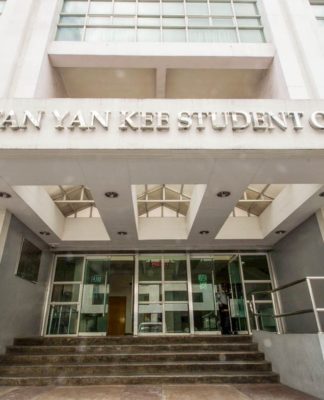THE SEES of Manila and Caceres will soon be under new leaderships with the appointment of Imus Bishop Luis Antonio “Chito” Tagle as the new Archbishop of Manila and the impending retirement of Caceres Archbishop Leonardo Legaspi.
Last month, Pope Benedict XVI appointed the Jesuit-trained Tagle as the 32nd archbishop of the See of Manila, succeeding Cardinal Gaudencio Rosales who held the post for seven years.
Tagle, internationally a well-known theologian, will be the fifth Filipino to occupy the post. The Archbishop of Manila is regarded as the country’s top cleric, and as the Primate of the Philippines.
Cebu Archbishop Jose Palma, incoming president of the Catholic Bishops’ Conference of the Philippines (CBCP), said Tagle was a “good choice.”
“I have so much respect and high regards for him because he is a brilliant preacher. I felt that the Holy Father made a very great choice,” Palma told the Varsitarian.
Fr. Rodel Aligan, O.P., former dean of the Faculty of Sacred Theology, noted that Tagle is the “first Manila archbishop who is a native of Manila.”
Gabriel Reyes, the first Filipino archbishop, was a native of Capiz while Cardinal Rufino Santos, the second Filipino archbishop, was born in Pampanga. Cardinal Jaime Sin was from Aklan. Rosales is a native of Batangas.
Tagle is “well grounded in theology,” and has served as chairman of the Episcopal Commission on Doctrine of the Faith of CBCP, Aligan noted.
He added that Tagle is still “young” to be appointed archbishop, at 54 years old.
Tagle grew up and studied elementary and high school in Parañaque, and went to San Jose Major Seminary at Ateneo de Manila. He was ordained priest at Imus Cathedral in 1982 and named bishop of Imus, Cavite in 2001.
In 1997, Tagle became a member of the International Theological Commission, where he met Cardinal Joseph Ratzinger, the future Pope Benedict XVI.
While Tagle holds conservative doctrinal positions (he has a Youtube video opposing the pro-contraception reproductive health bill), he had worked on controversial projects like the History of Vatican II project of the so-called Bologna school, said Vatican analyst John Allen.
Allen said Tagle, who is expected to be given the cardinal’s red hat, is now a “papal contender.”
At the Catholic University of America, Tagle wrote his theology dissertation under Fr. Joseph Komonchak, a critic of Humanae Vitae, the papal encyclical that reaffirmed the Church ban on contraception.
Widely read blogger Sandro Magister noted that Tagle wrote the key chapter of History of Vatican II, (“The Black Week of Vatican II”) which he said interprets the council as a “rupture” and a “new beginning” for the Church. Pope Benedict XVI wants Vatican II to be interpreted as a continuity.
Tagle’s appointment to the See of Manila was announced Oct. 13 by Charge d’Affaires Msgr. Gabor Pinter of the Apostolic Nunciature in Manila. Tagle will be installed in ceremonies at the Manila Cathedral on Dec. 12.
Soon to retire
Caceres Archbishop Leonardo Legaspi, a former UST rector, announced last year that he had sought retirement. Legaspi is awaiting the Pope’s confirmation.
Legaspi was the first Filipino rector of UST, assuming the post in 1970. He was ordained bishop in 1977 and appointed archbishop of Caceres in Bicol in 1983. He was elected president of the CBCP in 1986.
Canon Law requires archbishops and bishops to write a letter of resignation upon reaching the age of 75, but the Holy Father may either accept or delay the acceptance of the resignation.
Fr. Albert Orillo, spiritual director of the UST Central Seminary, said that earlier last year, the Tercentennial Year of the Peñafrancia Devotion, Legaspi was diagnosed with lung cancer and had chemotherapy sessions for several months.
“During that time, his prayerful wish was simply to be able to join the Tercentenary Celebration and then he will be ready to accept whatever fate had at stake for him,” Orillo said. “But lo and behold, just before the Penafrancia celebration in September 2010, he was found to be cured of his illness.”
Legaspi, said to be the longest-serving prelate of the Archdiocese of Caceres, has myriad contributions to the archdiocese including seminary formation, catechetical program, and the establishment of parishes.
“Archbishop Legaspi is indeed a gift to the Church of Caceres. It is not simply what he did but basically what he was to the Church,” Orillo said. “He focused his ministry to the first two: formation of priests and formation of the lay faithful. Then, he established the Catechetical Formation Center to answer the demand of the formation program for lay catechists.”
Orillo said almost half of the present 85 parishes in the Archdiocese of Caceres were established during Legaspi’s incumbency. For this, Legaspi’s presence is “truly felt even in the smallest barangay of the archdiocese.”
Legaspi earned both his licentiate and doctorate in Sacred Theology from the UST Faculty of Sacred Theology.
“Resignation of a bishop is always a sad part in the life of every diocese. We are losing a great man: a pastor, a father, an educator, a formator, a builder,” Orillo said. James Bryan J. Agustin and Gervie Kay S. Estella













